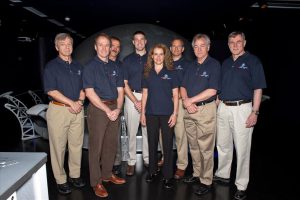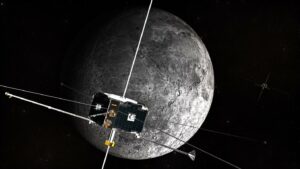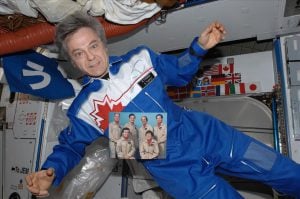Canada is joining a U.S.-led space mission that will see humans return to the moon — and, eventually, go on to Mars.
Prime Minister Justin Trudeau announced Thursday that the federal government is investing more than $2 billion over 24 years in Canada’s space program, including taking on a role in NASA’s Lunar Gateway project. NASA hopes to launch the lunar-orbit space station, which it calls “the foundation for human exploration deeper into the solar system,” in 2021. Canada’s contribution will be a new Canadarm that will repair and maintain the Gateway.
The investment marks the first major infusion of cash into Canada’s space program in more than two decades. “Canada’s historic investment will create good jobs for Canadians, keep our astronaut program running and our aerospace industry strong and growing, while opening up a new realm of possibilities for Canadian research and innovation,” Trudeau said.
NASA has been actively seeking partners in the Lunar Gateway project since early 2018. Following a meeting of aerospace industry executives and government representatives in November, federal Transport Minister Marc Garneau — a former astronaut and the first Canadian to go to space — expressed keen interest in the space station, saying “The time has come again to go back [to the moon].”
The first moon landing, which took place 50 years ago this July, was motivated by Cold War competition between the United States and the Soviet Union; the Lunar Gateway project is about global collaboration in the name of science, Garneau said.
“There’s more science to be done on the moon to understand it,” he told Newsfirst Multimedia. “It can be an observatory, because it doesn’t have an atmosphere. It can be a place to prepare for eventually going to Mars. You would try out technology and equipment on the moon, which is only three days away. And then, once you’re comfortable with it … you go to Mars.”
Canada’s investment also includes $150 million over five years for a Lunar Exploration Accelerator Program, which will help small- and medium-sized businesses develop technologies to be used and tested in lunar orbit, and a junior astronaut recruitment program to get young people excited about careers in the science, technology, engineering and mathematics (STEM) fields.
According to federal government figures, Canada’s space industry employs 10,000 people and generated $2.3 billion for the Canadian economy in 2017, but in recent years, Canada had slipped from eighth to 18th place in terms of investment in space as a percentage of GDP. In an op-ed for the Ottawa Citizen published in December, former astronaut Dave Williams warned that failure to invest in Canada’s space program would jeopardize the country’s ability to compete in a global industry valued at $350 billion and growing.
Williams welcomed Thursday’s announcement, saying the new funding will help secure Canada’s legacy as a spacefaring nation.
“It’s exciting, looking at the future,” he said. “Either the first Canadian to walk on the moon is in the Canadian Space Agency’s astronaut program right now, or they’re out there somewhere, just waiting for their chance.”
Read more stories about space exploration from Canadian Geographic:





